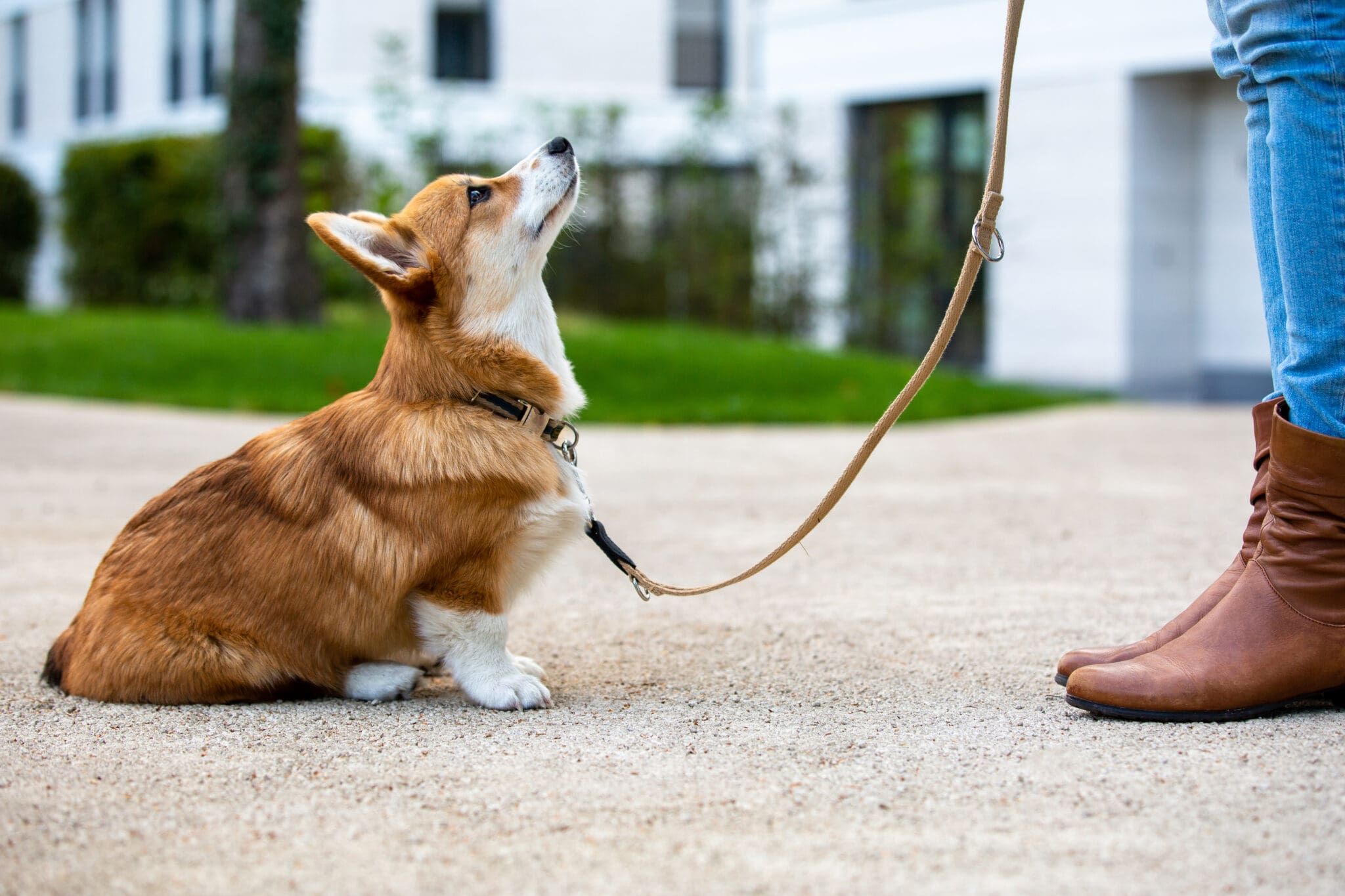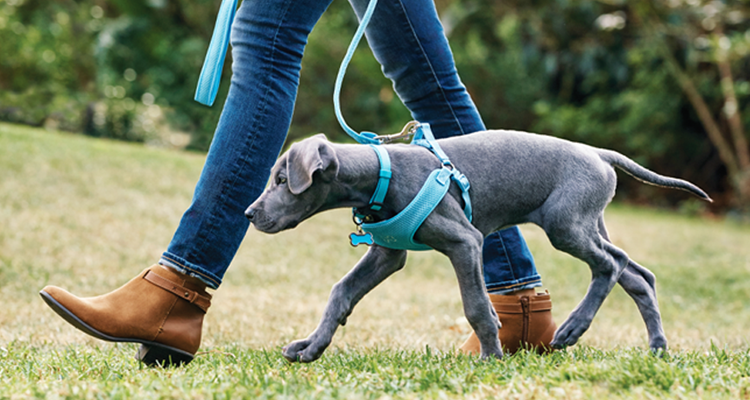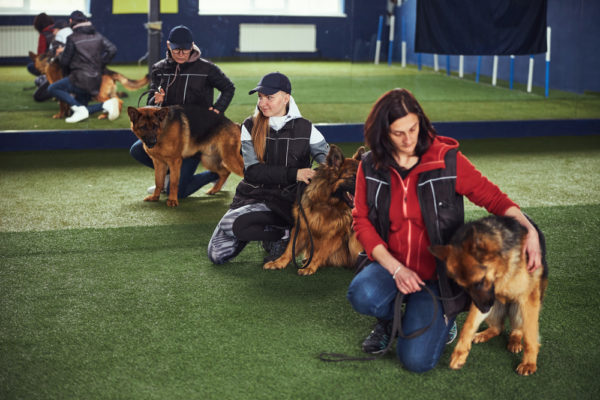Leading Pet Training Strategies Every Owner Must Know

Positive Reinforcement Strategies
Utilizing favorable support methods is vital for efficient pet training, as it cultivates a relying on bond between the trainer and the dog. This technique concentrates on rewarding preferable behaviors as opposed to punishing unfavorable ones, developing an atmosphere for finding out. Incentives can include treats, appreciation, or playtime, which encourage pet dogs to repeat the actions that gain them these incentives.

Furthermore, this strategy improves the pet dog's enthusiasm for training sessions. They are a lot more engaged and responsive when dogs link training with favorable experiences. Dog training. Past instant actions adjustment, favorable support urges a collective partnership in between the dog and fitness instructor, decreasing anxiousness and worry
To make the most of efficiency, it is crucial to provide rewards without delay, ensuring the pet dog connects the habits with the support. In essence, positive support techniques not just yield better-trained pet dogs yet additionally advertise an unified collaboration in between pet and proprietor.
Remote Control Training Approach
The remote control training method is a highly effective method that builds on the principles of favorable reinforcement by adding an unique noise to mark preferred habits. This approach makes use of a tiny portable gadget that produces a clicking noise, enabling fitness instructors to connect with their canines in a instant and clear manner. When a canine carries out a behavior that the owner wishes to encourage, the clicker is activated, adhered to by an incentive, usually in the kind of treats or appreciation.
The trick to effective remote control training exists in uniformity and timing. It is essential to click at the specific minute the preferred behavior happens, making sure that the pet dog connects the noise with the activity and the subsequent incentive. This technique not only boosts interaction yet likewise fosters a stronger bond between the pet dog and the owner, as it motivates interaction and communication throughout training sessions.
Remote control training can be put on a range of habits and commands, from standard obedience to a lot more intricate methods. Its flexibility and effectiveness make it a favored technique among specialist instructors and pet owners alike, leading the way for a trained and receptive canine buddy.
Chain Training Basics
Effective leash training is crucial for ensuring a satisfying and secure walking experience for both canines and their proprietors. A flat collar might function for some dogs, while others might benefit from a harness that lowers pulling.
Introduce your dog to the leash gradually, allowing them to explore it in a comfortable environment. This involves gratifying your canine for strolling beside you rather than pulling ahead.
If your canine begins to pull, quit strolling right away. Wait till they go back to your side prior to returning to. This shows them that drawing does not result in advance. Additionally, practice numerous strolling settings to assist your pet dog adapt to interruptions.
Regular method will certainly solidify your pet dog's understanding of leash decorum. Bear in mind that chain training is a recurring process; patience and uniformity will yield the finest results, cultivating a favorable experience for both you and your canine companion.
Socializing Methods
Socializing is a crucial facet of canine training that should preferably begin during puppyhood yet can be helpful at any type of age. Reliable socialization assists pets establish self-confidence and minimizes the likelihood of behavior issues. To implement successful socialization strategies, subject your canine to a range of atmospheres, people, and various other animals.
Start with regulated setups, such as young puppy courses or organized playgroups, where young pets can read this article connect securely. Progressively present your canine to brand-new experiences, including different sounds, surfaces, and tasks. Make sure these experiences are satisfying and favorable to establish a complacency.
For adult pet dogs or those lacking direct exposure, start with low-stress circumstances. Short, advice positive communications with tranquil dogs and friendly people can create positive associations. Use deals with and praise to reinforce desirable habits during these experiences.

Uniformity and Patience
Identifying the importance of uniformity and persistence in pet dog training is vital for accomplishing lasting outcomes. Training a canine is a gradual procedure that needs an organized strategy and unwavering dedication from the owner. Each command or actions need to be strengthened regularly to assist the canine recognize what is anticipated of them. Inconsistent training can result in complication, making it hard for the pet dog to understand behaviors or commands, eventually preventing development.
Pets, like people, discover at their own speed. This promotes a trusting connection between the canine and proprietor, encouraging a much more passionate and ready learner.
To cultivate uniformity and perseverance, establish a regular training regular, utilize the same commands, and make certain that all family members use the very same training concepts - Dog training. By doing so, you develop a secure atmosphere helpful to learning, allowing your pet to prosper and create into a well-behaved friend
Final Thought
To conclude, efficient canine training techniques, such as positive support, remote control training, and proper leash training, are important for fostering a healthy and balanced owner-dog partnership. Additionally, executing socializing strategies and preserving uniformity and patience throughout the training process adds dramatically to a pet dog's total wellness. By incorporating these methods, pet dog proprietors can assist in the development of well-adjusted, obedient pet dogs, ultimately boosting the top quality of life for both the dog and the proprietor.
Amongst the most popular approaches are favorable support, clicker training, and chain training, each offering distinct advantages that add to a mannerly site pet dog. As we explore these basic techniques, it comes to be apparent that grasping their nuances can dramatically affect the training experience and the pet's overall actions.Utilizing positive support strategies is necessary for efficient pet training, as it fosters a relying on bond in between the fitness instructor and the pet.In verdict, reliable canine training strategies, such as favorable reinforcement, clicker training, and correct leash training, are essential for cultivating a healthy and balanced owner-dog connection. By integrating these techniques, dog owners can facilitate the development of well-adjusted, obedient pet dogs, eventually enhancing the high quality of life for both the canine and the proprietor.